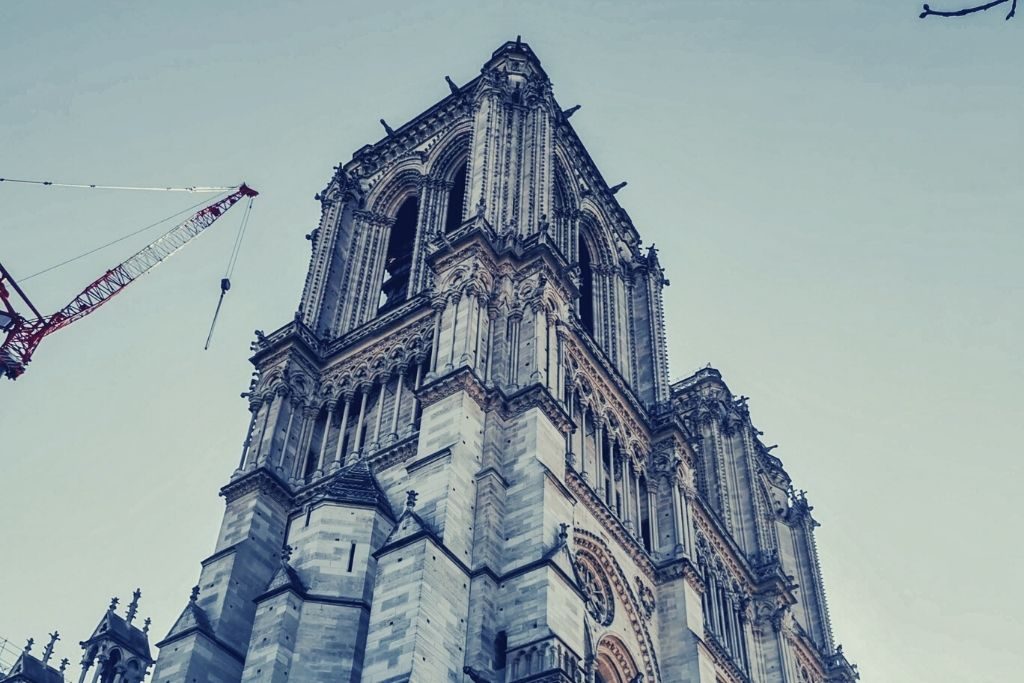The Notre Dame Cathedral in Paris was the victim of a devastating fire in April 2019. Although the exact reason for the fire was not established and it was eventually ruled out as accidental. The blazes destroyed the roof and the spire, and also damaged the vaulted ceilings and windows. The ongoing reconstruction works on the cathedral epitomize the positive changes of digitalization in construction.
The Roman Catholic cathedral, which is one of the finest examples of the French Gothic style, was built between the 12th and 14th centuries. Throughout its lifespan of hundreds of years, it had many different architects and renovators who breathed their vision into the masterpiece through pen and paper plans.
However, the current architects and renovators of Notre Dame no longer have access to these documents. But luckily, they have even better tools: 3D digitization.
Notre Dame de Paris: Rising from its Ashes
Between 2014 and 2016, Notre Dame was the subject of a complete 3D digitization by the company Art Graphique Patrimoine, employing an extraordinary tool for all the project managers of the site. Thanks to this model, architects were able to study the wooden frame destroyed by fire and simulate the reconstruction work in great detail.
A sponsorship agreement was signed between the public institution in charge of the conservation and restoration of the cathedral, and Autodesk France, a leading publisher of 3D design, engineering, and entertainment software.
The aim of the reconstruction project is mighty but straightforward: to make BIM (Building Information Modeling) technology and the associated management and exchange software available to all those involved in the project.
“This collaborative and intelligent work method allows construction site participants to benefit in real-time from a shared and scalable 3D database that brings together the rich information necessary for the smooth running of these operations,” said the two organizations in a statement published last April.
The end goal is to allow all those in charge of the reconstruction to gain six months in the process.
Better, Faster, Cheaper Buildings and Renovation

The impressive journey of Notre Dame’s rebirth is no longer a unique one — and millions of others can reap the same benefits tapping into cutting-edge building modeling and design technologies.
Better, as the virtual building models generated via BIM objects allow for analyses and simulations (energy, structural, or more.), controls (compliance with standards, budget, etc.), and visualizing the finished product even before the first stone is laid.
Faster, as all the elements of a BIM model interact with each other. Concretely, if you move a wall, the windows, doors, and structures attached to that wall also move.
Cheaper, because the 3D modeling of future buildings makes it possible to verify very early on the financial feasibility of a project and the respect of deadlines. It also allows project managers to maintain a birds-eye view of the affairs of the construction site, in real-time, including the costs, interoperability between the various trades, collaborative project management, and time savings.
Digital tools are far from being gadgets and gimmicks in the construction sector. So much so that in the future, when we say construction, what we’ll refer to is, in fact, e-construction.
If the devastating fires happened in pre-digital times, the iconic cathedral of Notre Dame might have been buried in history. However, thanks to the digital innovations and solutions available, Notre Dame can enjoy a process of rebirth — which will be done better, faster, and cheaper than it was ever possible.






